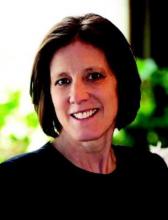We belong in our family, in our group, and in our community. Belonging is a basic human need, and we work throughout our lives to seek or create safe places where we can belong. For the LGBTQ+ community, the Pulse nightclub was one of those rare places where they could feel like they truly belonged. It was a place where they did not need to pretend to be someone else or to keep their guard up against insults or criticism. For survivors of the shooting, the families, and the LGBTQ+ community, that sense of belonging is now fractured.
Pulse reportedly represented every LGBTQ+’s queer bar, where a safe environment is sought – an environment in which to grow and express identity. For the LGBTQ+ community, the June 12 massacre threatened all safe havens – where few currently exist – especially in the night scene, where the increased risk of violence is a constant factor in deciding where to party. There are few gay bars.
What must psychiatrists understand about the impact of the event, besides the regular work of grieving? Some specifics pertinent to this attack must be understood: the preponderance of Latinos1, the youthfulness of most victims, and the impact and reverberations throughout the LGBTQ+ community. This column highlights the unique aspects of this tragedy, and the complexity of the grieving that will take place in these families and communities.
Grief, illness, and resilience: What do we know?
Grieving after sudden and violent deaths, compared with natural deaths, is more likely to be associated with mental health disorders and a slower recovery (Psychiatry. 2012 Spring;75[1]:76-97). Traumatic loss can cause incapacitating grief and a search for meaning that can continue for years, especially in those who identify closely with the victims (J Trauma Stress. 2016 Feb;29[1]41-8).
The LGBTQ+ community identifies strongly with the victims of the Orlando shooting, and so is more likely to have a prolonged and difficult grieving process. Feelings of “it could have been me” or “this might happen to me or my loved ones,” can result in symptoms of anxiety and survivor guilt. The LGBTQ+ community also is grieving the loss of a safe place and that associated sense of belonging. Loss of safety and feelings of reduced control over one’s life result in a more difficult grieving process, irrespective of the cause of death (Death Stud. 2006;30[5]:403-28). It is as if the loss provides further evidence of life’s injustices and unpredictability, provoking feelings of helplessness and fear.
Being able to make sense or make meaning after a disaster is a key component of developing resilience (J Clin Psychol. 2016 Feb 22. doi: 10.1002/jclp.22270). To make meaning out of a loss, people inevitably will examine their own lives for meaning and purpose. Meaning-making also can result in post-traumatic growth, such as an increased appreciation for life, stronger connections with family and friends, or greater awareness of one’s strengths.
The meaning-making process, often facilitated by psychotherapy, plays a critical role in recovery. Meaning-making takes different forms. For some people, the record-breaking turnout at NYC Pride, in which the owner of Pulse and others rode on a float and received great support, was a significant event. Meanwhile, another person who might be scared might want to see his family, regardless of whether or not the family is fully accepting.
Grief as a social process
Coping with grief is the working out of “the meaning of the loss,” both personally and in community. Grieving is a social process, and eulogies, grief accounts in popular literature, and elegies help construct the identity of the loved one and the meaning of the event. Grieving involves reviewing the relationship to the lost loved one and establishing a sense of continuity between life before and life after the loss (Death Stud. 2014 Jul-Dec; 38[6-10]:485-98).
One challenge for the LGBTQ+ community is how to direct the meaning of the loss. What is the meaning of this loss and how will the dead be remembered? The outpouring of support across the world is heartwarming and reflects how the LGBTQ+ community has become more accepted in the world at large.
The LGBTQ+ community experiences much less stigma than 50 years ago. In 1973, after the firebombing of a club in New Orleans, some relatives reportedly refused to claim the bodies of their gay sons. However, there remains much variation in how communities/societies view LGBTQ+ individuals and relationships.
Cultural considerations of being LGBTQ+
Nonbinary gender identity is recognized in several cultures around the world. The word “Mahu” in Polynesian culture and the concept of being Two-Spirit in some Native American cultures describe those who do not identify as their assigned sex at birth, play out gender roles opposite their assigned sex, or are attracted to same-sex partners, according to biologist Joan Roughgarden, PhD, (“Evolution’s Rainbow: Diversity, Gender and Sexuality in Nature and People” Los Angeles: University of California Press, 2004). In Dr. Roughgarden’s 2010 book, “The Genial Gene” (Los Angeles: University of California Press), she promotes social-selection theory as an alternative to the Darwinian selfish gene theory. She lists 26 phenomena, not explained by current sexual-selection theory, that are better explained by social selection, a population-based explanation of partner selection. Those ideas are beginning to reach a wider audience in mainstream culture, although for many communities and religions, those ideas are seen as “wrong” or “blasphemous.”


